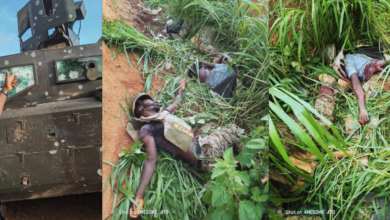Hunger, Disease Forcing Somalia Into A Climate Crisis – NRC
Amidst worsening levels of hunger, more than 14,000 people in some of the worst-hit areas are facing devastating conditions, with two-thirds reporting no regular access to water and skipping meals in the last week.

More than 800,000 people have fled their homes due to drought since the start of 2021 in Somalia, the Norwegian Refugee Council (NRC) said.
The number of people facing crisis hunger levels will rise from less than five million to more than seven million in the coming months, the NRC warned.
Jan Egeland, the Norwegian Refugee Council’s Secretary, said lack of rain in four rainy seasons have caused catastrophic hunger, disease and displacement, forcing Somalia into a climate crisis, which is threatening to worsen conditions in the coming months.
“Somalia’s climate emergency is a hammer blow to millions, combining years of drought with unheard-of levels of human suffering and starvation,” Egeland said at the end of his trip to Somalia.
In addition to the starvation and loss of livestock, Egeland said, “Severely malnourished children of families who fled to cities now beg for the daily food and water they need to survive”.
“Donors, including the neighbouring Gulf countries, need to dig deep and fast before the predictions of mass starvation become fatal figures of shame.”
A recent NRC assessment representing more than 14,000 people in some of the worst-hit areas confirmed the devastating conditions, with two-thirds reporting no regular access to water.
“In a situation not seen in more than 40 years, Somalia is witnessing a historic dry run, with an expected fifth failed rainy season,” the assessment reads.
Families interviewed said they were forced to skip meals last week. In addition, two-thirds of households reported losing half and all their livestock with lower rainfall recorded and little to no rain in June. Long-range forecasts indicate a historic fifth poor rainy season is likely.
NRC said about 90 per cent of Somalia’s wheat imports came from Russia and Ukraine. Since the war broke out, the grain supply has been blocked, and prices have exploded.
Across Somalia, around 7 million people are expected to experience high levels of acute food insecurity between now and Sept. 2022, including more than 213,000 facing catastrophic hunger.
“Despite the looming famine, Somalia has only seen 28 per cent of its humanitarian needs funded through the UN-sponsored appeal,” Egeland said.
“Somalis are on the frontline of the global climate catastrophe, but far too little of the funding promised has been received by the people hardest hit.”
“Less than USD500 million has been allocated as humanitarian funding by international donors this year, compared to USD1.3 billion in 2017 when Somalia faced similar drought conditions.”
Somalia is ranked second in terms of climate vulnerability, according to the University of Notre Dame’s Global Adaptation Initiative ranking in 2019.
Support Our Journalism
There are millions of ordinary people affected by conflict in Africa whose stories are missing in the mainstream media. HumAngle is determined to tell those challenging and under-reported stories, hoping that the people impacted by these conflicts will find the safety and security they deserve.
To ensure that we continue to provide public service coverage, we have a small favour to ask you. We want you to be part of our journalistic endeavour by contributing a token to us.
Your donation will further promote a robust, free, and independent media.
Donate Here




